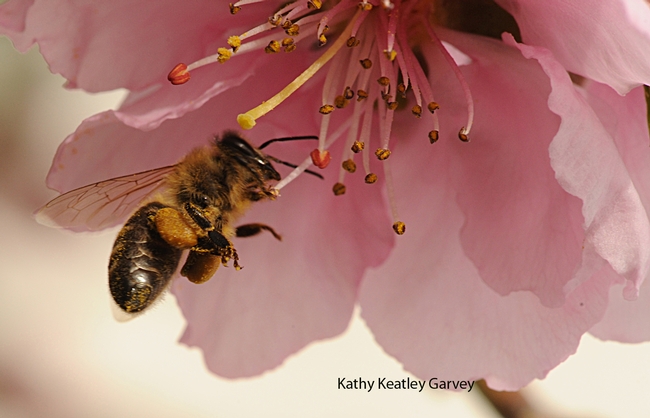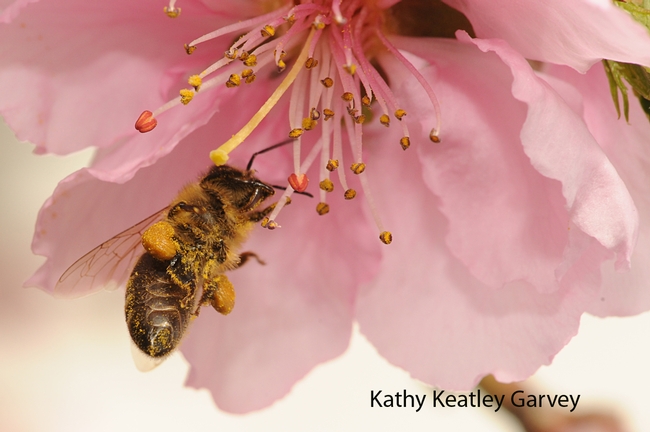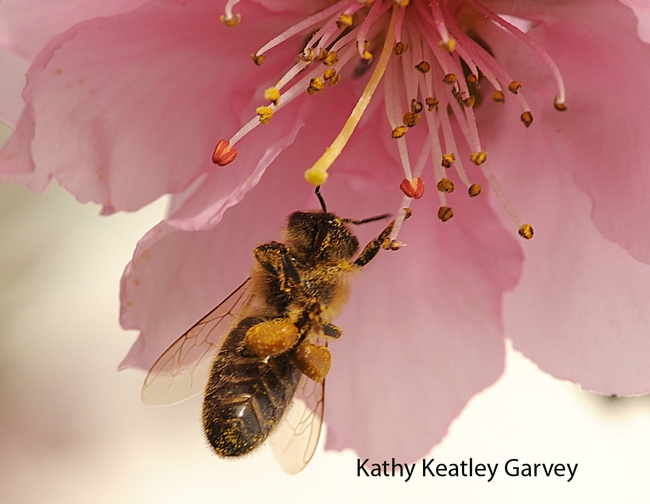If you've ever watched honey bees work the blossoms, you'll probably see them packing pollen in their pollen baskets and cleaning their tongue as they buzz from flower to flower.
Pollen is protein, and nectar, carbohydrates. Worker bees collect both, plus water and propolis (plant resin) for their colony.
"Pollen in the plant world is the equivalent of sperm in the animal world," writes UC Davis emeritus professor Norm Gary in his book, Honey Bee Hobbyist: The Care and Keeping of Bees. "Fertilization and growth of seeds depend upon the transfer of pollen from the male flower parts (anthers) to the receptive female parts (stigmas). For many species, such as grains and nuts, pollination occurs by airborne pollen that is produced in great quantity and characterized by very small, lightweight pollen grains. Airborne pollen causes most human allergies."
That's what he calls "Pollen 101."
"Inexperienced foragers quickly learn the most efficient movements to dislodge pollen grains from the anthers," writes Gary, who spent 32 years in the academic world of teaching, research and public service and continues to be a professional bee wrangler. "This frequently involves the use of their tongues and mandibles in licking and scraping the anthers, which slightly moistens the pollen."
"After becoming coated in pollen grains, the bees meticulously brush pollen from the body hairs with the comblike hairs on their legs. This process gradually transfers the pollen to the hind legs, where it accumulates as two 'pellets,' adhering to the outer surface of the pollen baskets on their hind legs."
A pollen-collector can collect a full load in about 10 minutes, Gary says. Number of pollen-collecting trips a bee can make in a day? Ten is typical.
Gary, who has amassed more than six decades of beekeeping experience, marvels at how the bee transfers pollen from its body to its pollen basket. It's "choreography that almost defies description," he writes.
Indeed.
Attached Images:

Honey bee packing pollen while foraging on a nectarine blossom. (Photo by Kathy Keatley Garvey

Honey bee pauses to clean her tongue. (Photo by Kathy Keatley Garvey)

Honey bee packing more pollen. (Photo by Kathy Keatley Garvey)